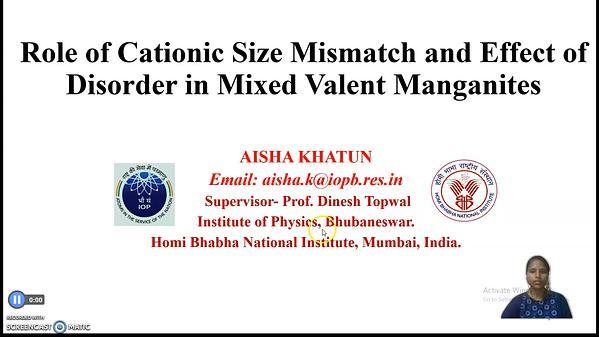Would you like to see your presentation here, made available to a global audience of researchers?
Add your own presentation or have us affordably record your next conference.
Electrical manipulation of spin textures inside antiferromagnets represents a new opportunity for developing spintronics with superior speed and high device density. Injecting spin currents into antiferromagnets and realizing efficient spin-orbit-torque-induced switching is however still challenging. Because of the diminishing magnetic susceptibility, the nature and the magnitude of current-induced magnetic dynamics remain poorly characterized in antiferromagnets, whereas spurious effects further complicate experimental interpretations (1-4). In this work (5), by growing a thin film antiferromagnetic insulator, α-Fe2O3, along its non-basal plane orientation, we realize a configuration where an injected spin current can robustly rotate the Néel vector within the tilted easy plane, with an efficiency comparable to that of classical ferromagnets. The spin-orbit torque effect stands out among other competing mechanisms and leads to clear switching dynamics. Thanks to this new mechanism, in contrast to the usually employed orthogonal switching geometry, we achieve bipolar antiferromagnetic switching by applying positive and negative currents along the same channel, a geometry that is more practical for device applications. By enabling efficient spin-orbit torque control on the antiferromagnetic ordering, the tilted easy plane geometry introduces a new platform for quantitatively understanding switching and oscillation dynamics in antiferromagnets.
References:
(1) P. Zhang, J. Finley, T. Safi, et al., Phys. Rev. Lett. Vol. 123, p. 247206 (2019).
(2) Y. Cheng, S. Yu, M. Zhu, et al., Phys. Rev. Lett. Vol. 124, p. 027202 (2020).
(3) C. C. Chiang, S. Y. Huang, D. Qu, et al., Phys. Rev. Lett. Vol. 123, p. 227203 (2019).
(4) H. Meer, F. Schreiber, C. Schmitt, et al., Nano Lett. Vol. 21, p. 114 (2021).
(5) P. Zhang, C.-T. Chou, H. Yun, et al., arXiv:2201.04732 (2022), accepted by Phys. Rev. Lett..


